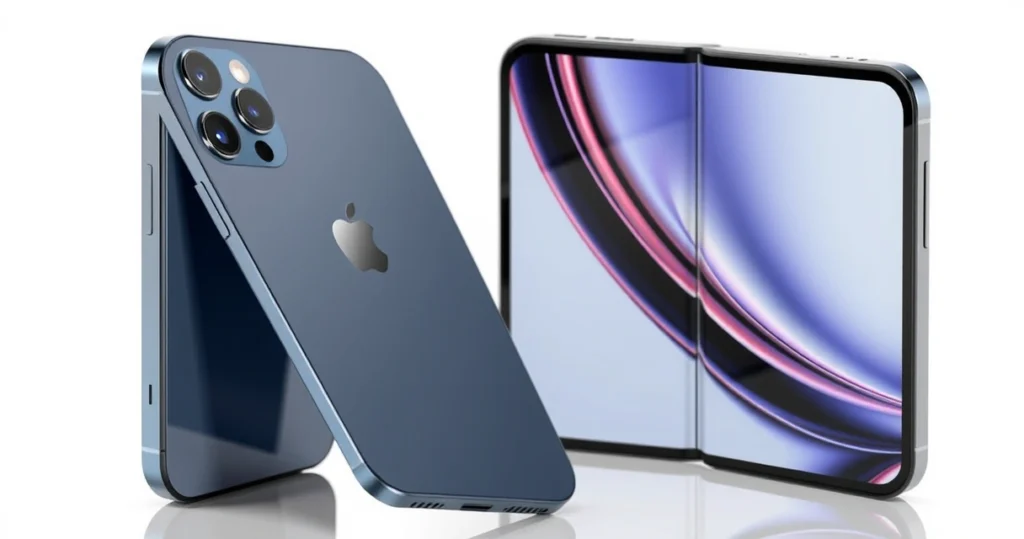In an era where smartphones continue to evolve, foldable devices have emerged as the new frontier in mobile technology. Apple, the tech giant renowned for its innovation, is rumored to be venturing into this territory with its first foldable iPhone. Although Apple has yet to officially confirm the development of a foldable smartphone, recent leaks suggest that the device is in the works. However, industry experts and enthusiasts are beginning to speculate that Apple’s entry into the foldable market may not be as groundbreaking as anticipated, especially when compared to competitors like Samsung.

Samsung has already established a significant foothold in the foldable smartphone market with its Galaxy Z series, showcasing advanced technology and innovative features that have garnered a loyal customer base. As Apple gears up to unveil its foldable iPhone, it faces the daunting challenge of competing against a rival that has spent considerable time perfecting its offerings. In this article, we will explore the potential shortcomings of Apple’s foldable iPhone and why it may struggle to match up against Samsung’s current lineup of foldable devices.
Understanding the Foldable Smartphone Landscape
The foldable smartphone market has seen rapid growth since Samsung launched its first foldable device in 2019. This innovation has revolutionized how users interact with their smartphones, offering larger screens while maintaining a compact form factor. Foldable smartphones combine the portability of conventional devices with the expansive display of tablets, catering to a wide range of consumer needs.
As of now, Samsung’s Galaxy Z Flip and Galaxy Z Fold series dominate this market segment. These devices have not only received positive reviews for their design and functionality but have also set a high standard for durability and performance. Apple, however, has been notably absent from this space, leading to speculation about how it will approach the foldable design.
Leaks and Rumors Surrounding Apple’s Foldable iPhone
Recent leaks regarding Apple’s first foldable iPhone provide insight into what consumers might expect from the device. According to insiders, the foldable iPhone may feature a clamshell design, similar to the Galaxy Z Flip, or a book-style design akin to the Galaxy Z Fold. However, details regarding the technical specifications, materials, and software enhancements remain scarce, leaving much to the imagination.
Design and Build Quality
One of the most critical aspects of any foldable smartphone is its design and build quality. Samsung has invested heavily in developing its foldable technology, using robust materials and hinge mechanisms designed to withstand the rigors of daily use. The question remains: will Apple be able to match this level of quality?
Software Integration and User Experience
Apple’s operating system, iOS, is known for its seamless integration across devices. However, adapting iOS for a foldable form factor may present unique challenges. Users expect a smooth transition between the open and closed states of a foldable device, and any hiccups could lead to dissatisfaction. Samsung has already optimized its One UI for foldable devices, providing features tailored specifically for multitasking and enhanced productivity. Apple will need to ensure that its software experience meets or exceeds these expectations.
Key Features That May Give Samsung an Edge
While Apple fans eagerly anticipate the arrival of a foldable iPhone, several key features currently available in Samsung’s foldable lineup may give the South Korean company a competitive edge.
- Hinge Technology: Samsung has perfected its hinge design, ensuring durability and a smooth folding experience. Reports suggest that Apple may still be finalizing its hinge technology, which could result in a less reliable initial offering.
- Display Quality: The Galaxy Z series boasts high-quality AMOLED displays with vibrant colors and deep contrasts. If Apple cannot match this display performance, it may fall short in terms of user satisfaction.
- Multitasking Capabilities: Samsung’s One UI allows for efficient multitasking, enabling users to run multiple apps simultaneously on the large screen. Apple will need to provide similar functionality to compete in this area.
- Established Ecosystem: Samsung has a robust ecosystem of devices designed to work seamlessly with its foldables. Apple’s ecosystem is equally strong, but the question remains if it can effectively incorporate foldable features into its existing lineup.
Pricing and Market Strategy
Pricing is another critical factor that will impact the success of Apple’s foldable iPhone. Samsung has positioned its foldable devices as premium products, often priced higher than traditional smartphones. If Apple adopts a similar pricing strategy, it may limit its potential customer base, especially in a market where consumers are becoming increasingly price-sensitive.
Moreover, Samsung has been proactive in marketing its foldable devices, generating excitement and interest among consumers. Apple’s marketing strategies are typically highly effective, but it remains to be seen how they will promote a foldable device that is unproven in the market. Effective market penetration will be essential for Apple’s success in this new category.
FAQ Section
1. When is Apple’s foldable iPhone expected to be released?
While there is no official release date, many analysts speculate that Apple may unveil its foldable iPhone within the next few years, depending on development progress.
2. What features are expected in Apple’s foldable iPhone?
Expected features include a foldable display, potential advancements in camera technology, and seamless integration with iOS. However, specific details are still under wraps.
3. How does Samsung’s foldable technology compare to Apple’s?
Samsung has years of experience in the foldable market and has developed robust hinge technology and optimized software, giving it a competitive edge over Apple.
4. Will Apple’s foldable iPhone be more expensive than Samsung’s models?
While specific pricing remains unknown, Apple typically positions its products at a premium price point, which may make its foldable iPhone more expensive than some of Samsung’s models.
5. Can Apple compete with Samsung in the foldable market?
While Apple has a strong brand and loyal customer base, it will need to overcome several challenges to effectively compete with Samsung, particularly in terms of technology, features, and pricing.
Conclusion
As Apple approaches the development of its first foldable iPhone, the anticipation among consumers is palpable. However, it faces a steep uphill battle against Samsung, which has already established a strong presence in the foldable smartphone market. From advanced hinge technology and optimized software to a robust ecosystem, Samsung has set a high bar that Apple must meet or exceed. With the stakes high and competition fierce, it will be interesting to see how Apple navigates this new territory and whether it can successfully deliver a foldable device that resonates with its user base.
📰 Original Source
Este artigo foi baseado em informações de: https://gizmodo.uol.com.br/1o-iphone-dobravel-deve-perder-para-a-samsung-neste-item/



